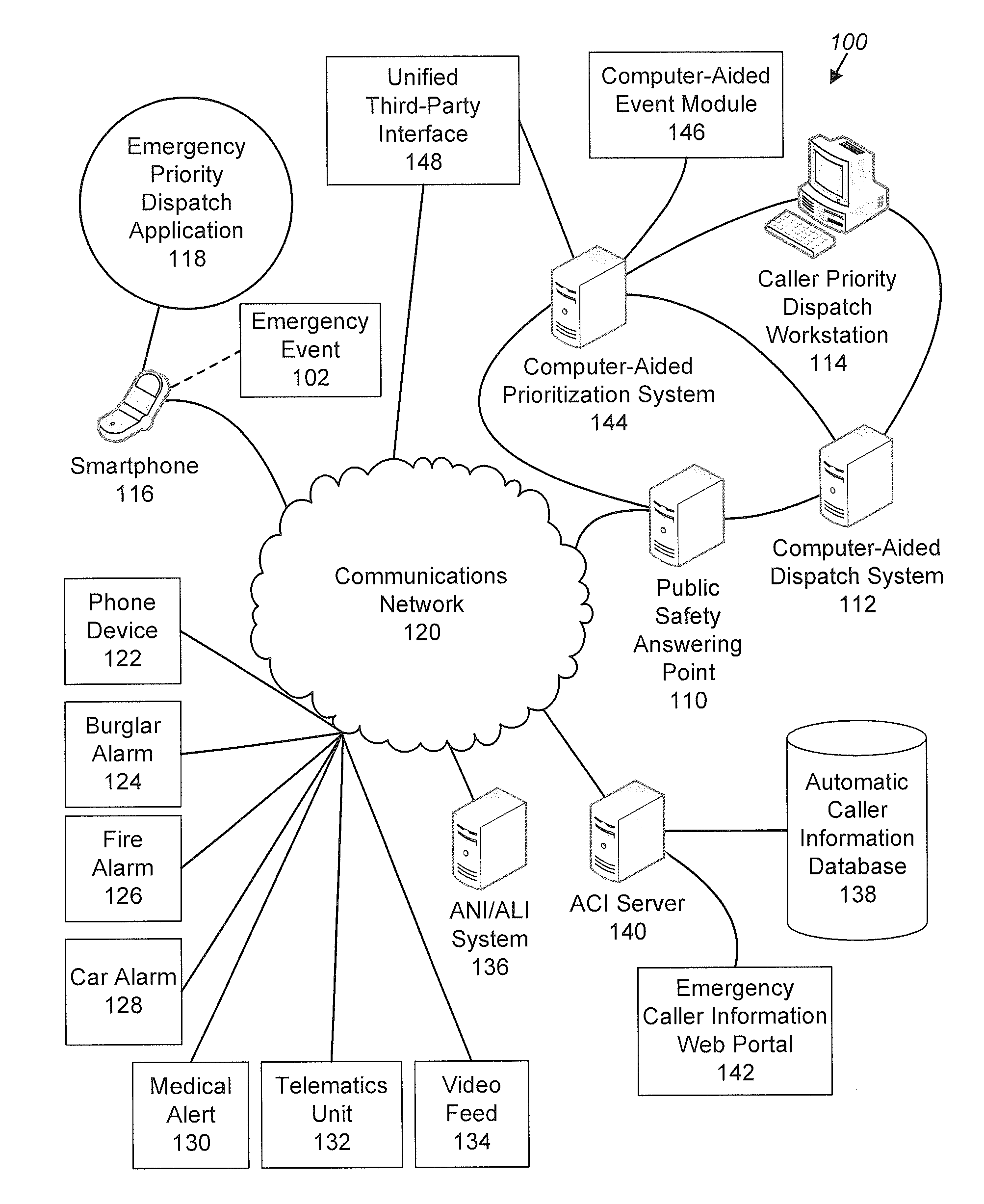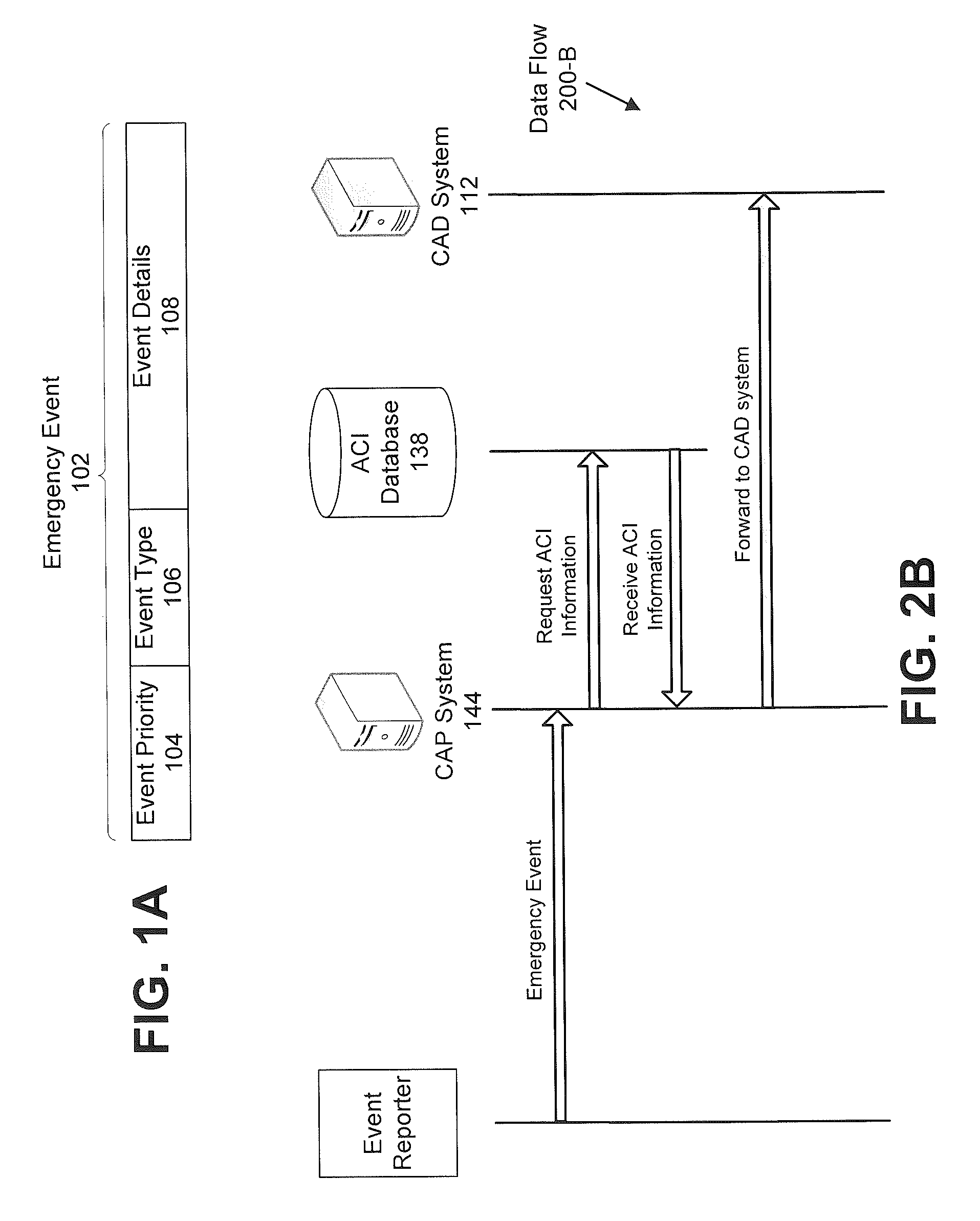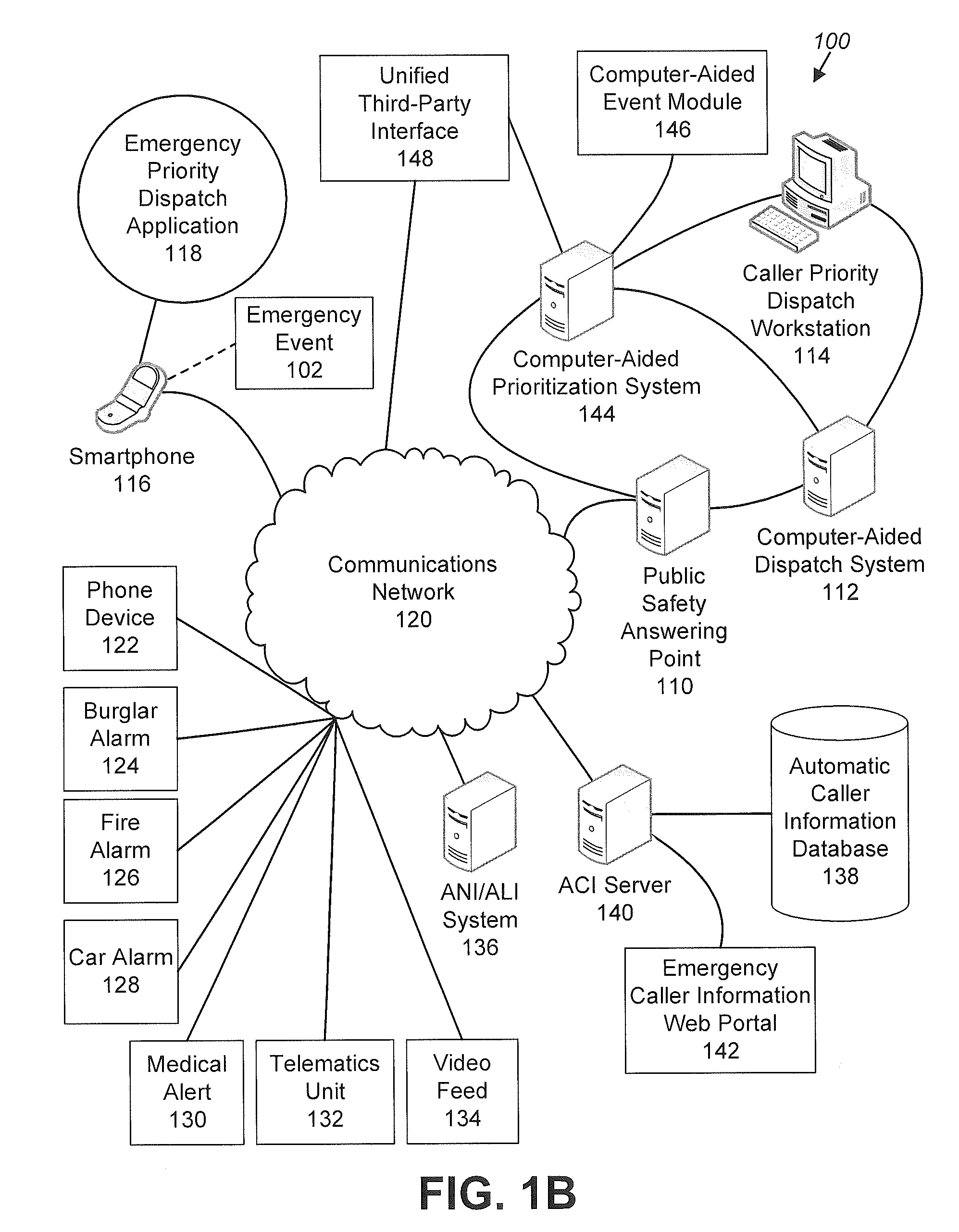Emergency 9-1-1 portal and application
a technology of emergency 9-1-1 and portal, applied in the field of emergency 9-1-1 portal and application, can solve the problems of poor reception, slow response time, and inability of the dispatcher to understand the caller
- Summary
- Abstract
- Description
- Claims
- Application Information
AI Technical Summary
Benefits of technology
Problems solved by technology
Method used
Image
Examples
Embodiment Construction
[0021]An emergency portal and dispatch system may improve the caller-to-emergency dispatch interaction by prioritizing incoming calls, providing additional caller information and creating a unified interface to bridge external emergency data with a computer aided dispatch (CAD) system at an emergency dispatch center. The emergency portal and dispatch system performs these objectives by shifting some of the responsibility onto the caller, business or reporting third-party to electronically provide a priority of the call, a type of emergency, and other pertinent information to the dispatch center so that the emergency dispatcher may dispatch an appropriate first responder in the fastest and most efficient manner possible.
[0022]With the emergency priority dispatch architecture, a caller may provide a priority and a type of emergency to dispatch as part of an emergency request or during the establishment of the emergency call, without the need to obtain additional queries for additional...
PUM
 Login to View More
Login to View More Abstract
Description
Claims
Application Information
 Login to View More
Login to View More - R&D
- Intellectual Property
- Life Sciences
- Materials
- Tech Scout
- Unparalleled Data Quality
- Higher Quality Content
- 60% Fewer Hallucinations
Browse by: Latest US Patents, China's latest patents, Technical Efficacy Thesaurus, Application Domain, Technology Topic, Popular Technical Reports.
© 2025 PatSnap. All rights reserved.Legal|Privacy policy|Modern Slavery Act Transparency Statement|Sitemap|About US| Contact US: help@patsnap.com



